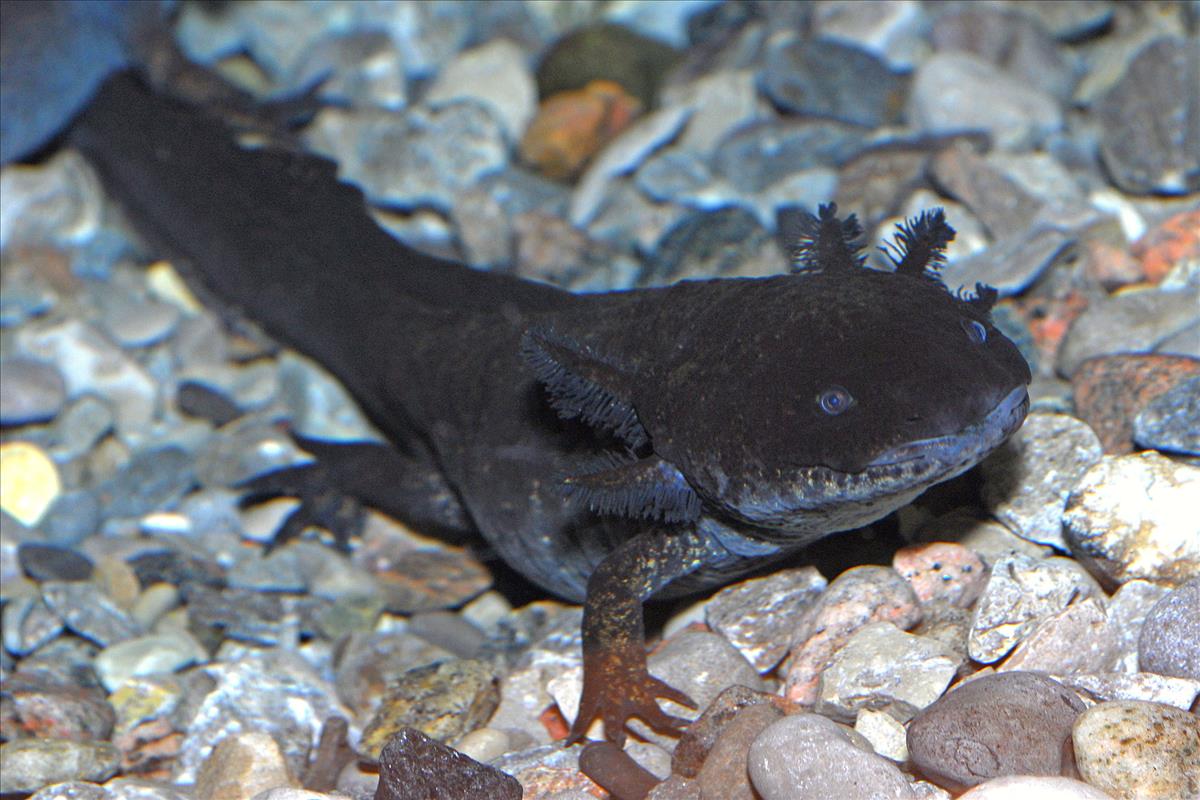Viewable


Amphibian
Location at the Zoo
Americas
Global Range
Americas
Axolotl
Ambystoma mexicanum
Order: Caudata ( or Urodela )
Family: Ambystomatidae
Genus: Ambystoma
The axolotl is an amphibian, which suggests it has a double life, part water and part on land. The axolotl, however, has a preference for remaining in water as a sexually mature larva; (an adaptation known as neoteny) they do not metamorphose. The axolotl belongs to the order Caudata, since it retains its tail in adult life as other salamanders and newts. The term axolotl should be restricted to the Mexican species Ambystoma mexicanum from Lake Xochimilco, even though it is also used to describe the larval form of the tiger salamander, Ambystoma tigrinum, from western Canada and the northern states of the U.S., and is a close relation to the axolotl.
An adult axolotl has an average length of 25-30 cm although some attain a length of 40-45 cm. The colouring in the wild is gray brown, often with spots but for the aquarium trade, they are being bred in white (albino) and golden colours, even a harlequin (spotted) pattern.
As any vertebrate, the body of an axolotl is built around a skeleton but with a difference. Even in fully grown animals, it isn’t completely bony. The wrists, ankles and particularly, the support system for the gills are composed of cartilage. The number of vertebrae varies; an average of 50 of which 30-35 is in the tail region. It has a powerful musculature with the four limbs controlled by specialized muscle groups. Internally, the axolotl is similar to any other, carnivorous amphibian in principal except that the lungs are rudimentary. It has a large gaping mouth (ambystoma: ambyx=cup and stoma=mouth) with fine teeth on both upper and lower jaw. The thick tongue is fixed as in fishes. Each side of the head is adorned with permanent feathery gills. These allow the axolotl to efficiently extract oxygen while remaining under water. Large axolotls occasionally supplement their oxygen by rising to the surface to take a quick gulp of air to fill their lungs. The average lifespan of the axolotl is 10 to 12 years. In captivity, certain specimen have lived for 25 years.
An adult axolotl has an average length of 25-30 cm although some attain a length of 40-45 cm. The colouring in the wild is gray brown, often with spots but for the aquarium trade, they are being bred in white (albino) and golden colours, even a harlequin (spotted) pattern.
As any vertebrate, the body of an axolotl is built around a skeleton but with a difference. Even in fully grown animals, it isn’t completely bony. The wrists, ankles and particularly, the support system for the gills are composed of cartilage. The number of vertebrae varies; an average of 50 of which 30-35 is in the tail region. It has a powerful musculature with the four limbs controlled by specialized muscle groups. Internally, the axolotl is similar to any other, carnivorous amphibian in principal except that the lungs are rudimentary. It has a large gaping mouth (ambystoma: ambyx=cup and stoma=mouth) with fine teeth on both upper and lower jaw. The thick tongue is fixed as in fishes. Each side of the head is adorned with permanent feathery gills. These allow the axolotl to efficiently extract oxygen while remaining under water. Large axolotls occasionally supplement their oxygen by rising to the surface to take a quick gulp of air to fill their lungs. The average lifespan of the axolotl is 10 to 12 years. In captivity, certain specimen have lived for 25 years.
Conservation Status: IUCN













